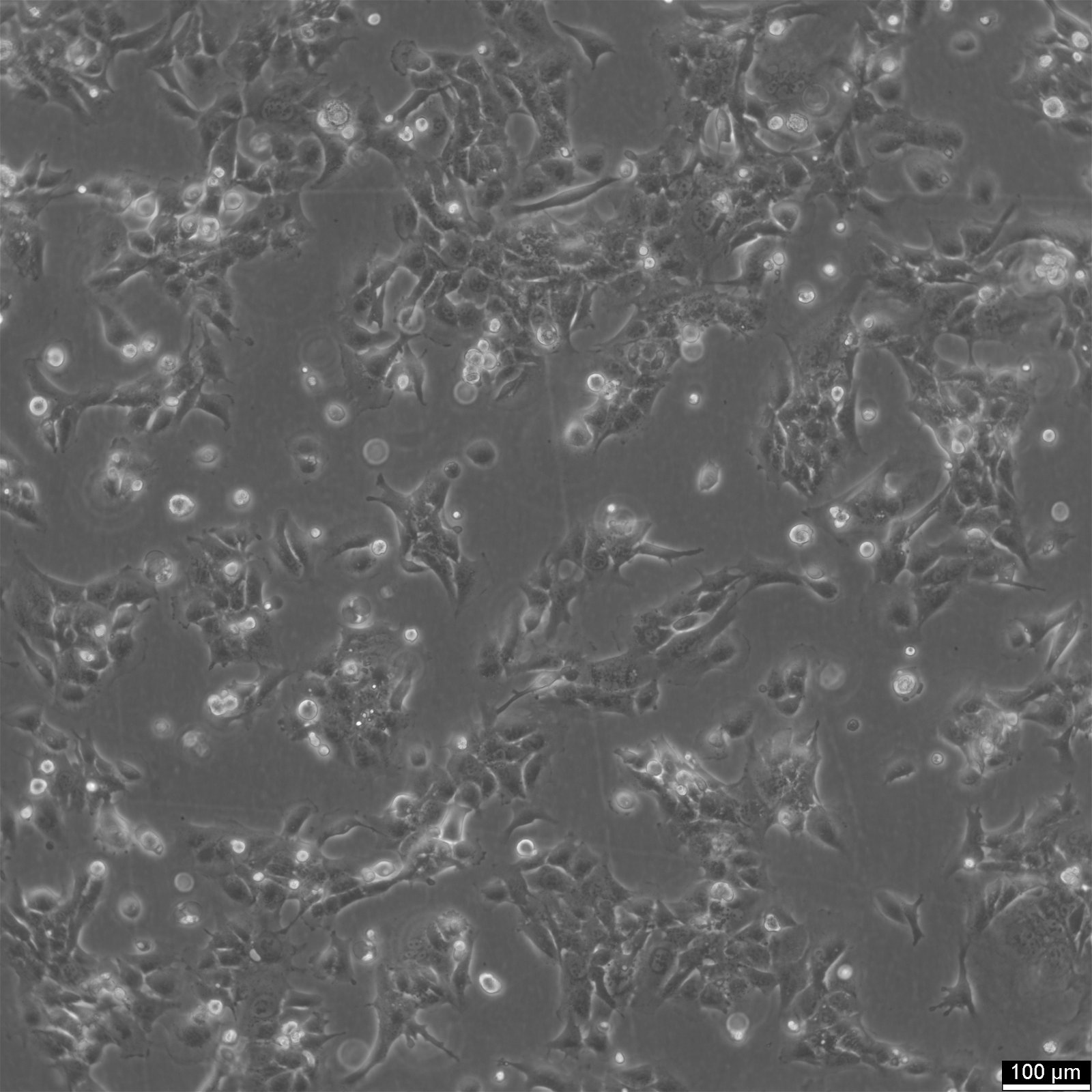HMC3 Cells
















General information
| Description | The Human Microglial Clone 3 (HMC3) cell line was developed in 1995 by Professor Tardieu's team through the SV40-dependent immortalization of microglial cells from human spinal cord and cortical tissues, obtained from embryos aged between 8 to 12 weeks. These primary cells, characterized by slow division and complex morphologies, were initially cultured for 10-15 days before immortalization. The HMC3 cells maintained several key features of primary microglia, such as a diverse expression of myeloid markers like CD68, CD11b, and CD14, though the expression levels varied notably with the choice of primary antibody, particularly for CD68. Following immortalization, the HMC3 cells exhibited enhanced proliferation rates, with doubling times between 24 and 48 hours, while preserving many phenotypic and morphological characteristics of their primary counterparts. Notably, there was a higher proportion of CD68 EBM/11-positive cells and a reduction in phagocytic activity compared to the primary cells. Stability in antigenic expression was confirmed across 35 passages, with the cells remaining positive for NSE, CD68, and CD11b, but negative for CD14, MHCII, and CD4 under baseline conditions. However, exposure to interferon-γ (IFNγ) elevated MHCII expression, aligning more closely with primary culture responses to the same treatment. Functionally, the HMC3 line distinguished itself by producing higher levels of interleukin-6 (IL-6) under basal conditions compared to other clones. Despite this, a direct comparison with primary microglial cells' cytokine production remains challenging due to methodological differences. The response to lipopolysaccharide (LPS) stimulation in these immortalized lines appeared diminished relative to primary cultures. Consistent with primary microglial characteristics, the HMC3 and other cloned lines did not produce tumor necrosis factor-alpha (TNFα), either spontaneously or following pro-inflammatory stimulation, highlighting a specific trait of human embryonic microglia. |
|---|---|
| Organism | Human |
| Tissue | Fetal brain |
| Applications | 3D cell culture, Neuroscience, Neuroinflamation |
| Synonyms | Human Microglia Clone 3, CHME-3, CHME3 |
Characteristics
| Age | Fetus |
|---|---|
| Gender | Unspecified |
| Morphology | Macrophage |
| Cell type | Microglial cell |
| Growth properties | Adherent |
Identifiers / Biosafety / Citation
| Citation | HMC3 (Cytion catalog number 300651) |
|---|---|
| Biosafety level | 1 |
Expression / Mutation
| Viruses | The SV40 genetic material is stably integrated into the cell genome. There is no active production or release of complete viral particles, which mitigates potential biosafety concerns. |
|---|
Handling
| Culture Medium | DMEM:Ham's F12, w: 3.1 g/L Glucose, w: 1.6 mM L-Glutamine, w: 15 mM HEPES, w: 1.0 mM Sodium pyruvate, w: 1.2 g/L NaHCO3 (Cytion article number 820400a) |
|---|---|
| Medium supplements | Supplement the medium with 10% FBS |
| Passaging solution | Accutase |
| Doubling time | 24 and 48 hours |
| Subculturing | Remove the old medium from the adherent cells and wash them with PBS that lacks calcium and magnesium. For T25 flasks, use 3-5 ml of PBS, and for T75 flasks, use 5-10 ml. Then, cover the cells completely with Accutase, using 1-2 ml for T25 flasks and 2.5 ml for T75 flasks. Let the cells incubate at room temperature for 8-10 minutes to detach them. After incubation, gently mix the cells with 10 ml of medium to resuspend them, then centrifuge at 300xg for 3 minutes. Discard the supernatant, resuspend the cells in fresh medium, and transfer them into new flasks that already contain fresh medium. |
| Freeze medium | CM-1 (Cytion catalog number 800100) or CM-ACF (Cytion catalog number 806100) |
| Handling of cryopreserved cultures |
|
Quality control / Genetic profile / HLA
| Sterility | Mycoplasma contamination is excluded using both PCR-based assays and luminescence-based mycoplasma detection methods. To ensure there is no bacterial, fungal, or yeast contamination, cell cultures are subjected to daily visual inspections. |
|---|---|
| STR profile |
Amelogenin: x,x
CSF1PO: 10,11
D13S317: 11
D16S539: 12,13
D5S818: 11,12
D7S820: 9,11
TH01: 6
TPOX: 8,9
vWA: 17,19
D3S1358: 16,18
D21S11: 30,31.2
D18S51: 18
Penta E: 7,13
Penta D: 10,14
D8S1179: 13,14
FGA: 21,25
D6S1043: 11
D2S1338: 17,25
D12S391: 16,21
D19S433: 15,15.2
|
